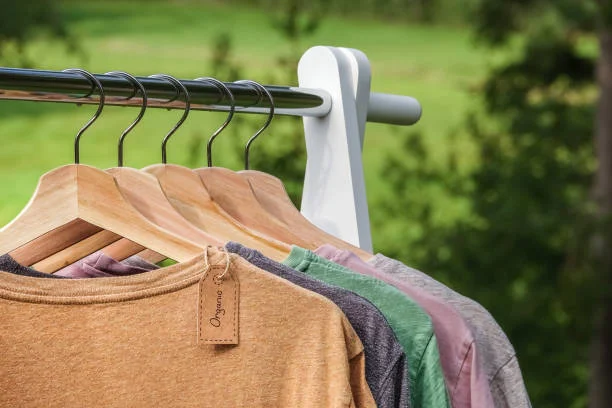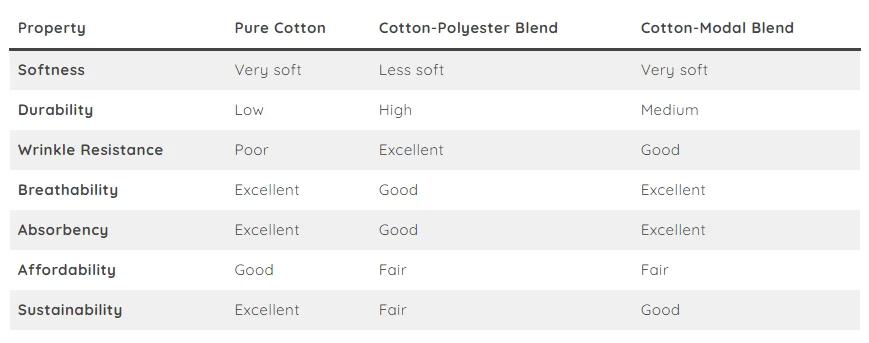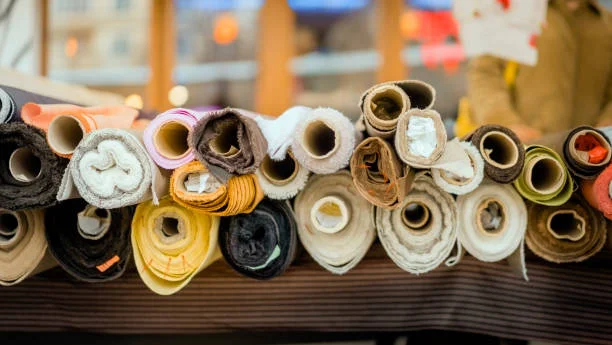Cotton blend fabric is a real game-changer when it comes to comfort and versatility. By combining the softness and breathability of cotton with the durability and stretch of synthetic fibers like polyester or spandex, you get a fabric that feels great and holds up beautifully, whether it’s for quilts or activewear. Whether you’re quilting, crafting, or making clothes, cotton blends offer the best of both worlds.
Understanding cotton blends is key to picking the right fabric for your projects. With so many options out there, knowing how these blends work can help you make smarter choices that lead to more durable, comfortable creations. Ready to explore how cotton blends can level up your quilting and sewing projects? Let’s dive in!
What is Cotton Blend Fabric?

Cotton blend fabric is exactly what it sounds like—a mix of cotton and other fibers, often synthetic ones like polyester, spandex, or linen.
This combination gives you the best of both worlds: the natural softness and breathability of cotton with the added benefits of durability, stretch, and wrinkle resistance from the other fibers. It’s a fabric that’s comfortable, long-lasting, and perfect for quilting, clothing, or home decor projects.
Cotton Blend Fabric Types
Cotton blends are super versatile and come in many different combinations. Each one has its own unique qualities, making it perfect for different types of projects. Let’s take a look at the most common cotton blends and where they shine.
1. Cotton-Polyester Blend (Poly-Cotton)
- Benefits: The softness of cotton with polyester’s durability and wrinkle resistance.
- Common Uses: T-shirts, sheets, home decor, and workwear.
- Pros: Easy to care for, resists wrinkles, and lasts longer than pure cotton.
- Cons: Not as breathable as 100% cotton and can feel a little stiffer, especially in hot weather.
2. Cotton-Linen Blend
- Benefits: Combines cotton’s breathability with linen’s lightweight, airy feel.
- Common Uses: Summer clothing, dresses, and lightweight quilts.
- Pros: Keeps you cool and comfortable in warm weather—perfect for casual, breezy looks.
- Cons: Linen wrinkles easily, so it might need a little extra care to stay looking fresh.
3. Cotton-Modal Blend
- Benefits: Super soft, smooth texture, and beautiful drape.
- Common Uses: Loungewear, dresses, and luxurious quilts.
- Pros: Incredibly soft with a silky feel—great for projects that need a bit of elegance and flow.
- Cons: A bit more delicate, so it might need gentle washing.
4. Cotton-Spandex Blend
- Benefits: Stretch and flexibility for comfort and movement.
- Common Uses: Activewear, leggings, and form-fitting clothing.
- Pros: Perfect for projects where you need fabric that moves with you and offers freedom of movement.
- Cons: The spandex can reduce breathability, making it less ideal for long periods in hot weather.
5. Other Cotton Blends
- Cotton-Nylon Blend: Durable and lightweight, ideal for bags, outerwear, and sporty projects.
- Cotton-Rayon Blend: Soft and drapey, perfect for flowy dresses or quilting projects that need a soft touch.
- Cotton-Silk Blend: Adds a luxurious feel and sheen, great for elegant garments or upscale quilts.
Properties of Cotton Blend Fabric
Cotton blend fabric is a favorite for many quilters, sewists, and crafters due to its unique blend of properties. Whether you’re quilting, making clothes, or working on home decor, cotton blends offer a lot of perks that you won’t find with 100% cotton. Let’s dive into the top properties that make cotton blends a go-to fabric choice for so many different projects.
Breathability
Cotton is naturally breathable, allowing air to flow freely, keeping you cool. When blended with synthetic fibers like polyester, the breathability may decrease slightly, but it’s still better than most synthetic fabrics.
Comparison to 100% cotton: Pure cotton is ideal for hot weather; cotton blends can be a little less breathable, depending on the mix. For example, cotton-polyester blends are breathable but won’t feel as airy as 100% cotton, so keep that in mind when making summer clothing or quilts.
Durability
Cotton blends are often more durable than pure cotton because they combine cotton’s softness with the strength of synthetic fibers.
Fibers like polyester or nylon add strength to cotton, making the fabric more resistant to wear and tear. Whether you’re working on quilting, activewear, or home decor, cotton blends hold up better against daily use and frequent washing.
Wrinkle Resistance
One of the standout features of cotton blends, especially cotton-polyester blends, is their wrinkle resistance.
Synthetic fibers like polyester help the fabric hold its shape and resist wrinkles, making it much easier to care for. If you’re sewing travel clothing or workwear, a wrinkle-resistant cotton blend will save you time, as it needs less ironing and stays neat all day.
Stretch and Flexibility
By adding synthetic fibers like spandex or elastane to cotton, you get some extra stretch and flexibility.
This is especially useful for activewear, leggings, and any project that needs a bit of give. The stretch ensures comfort and freedom of movement, making cotton-spandex blends a favorite for clothing that needs to move with you, without sacrificing the softness of cotton.
Moisture-Wicking & Comfort
Some cotton blends, especially those mixed with polyester, are designed to wick moisture away from your body. This makes cotton blends a fantastic option for activewear and sportswear. They help keep you dry and comfortable during physical activity by drawing sweat away from your skin, all while maintaining the softness cotton is known for.
Is Cotton Blend Fabric Good or Bad?
Cotton blend fabric strikes a balance between comfort, durability, and easy care, making it a popular choice for many sewing and quilting projects. But like any fabric, it has its pros and cons. Let’s break it down to help you decide if cotton blends are the right fit for your needs.
Pros of Cotton Blend Fabric
Comfort & Breathability: Cotton blends still offer the natural softness and breathability of cotton, but when mixed with synthetic fibers, they also provide moisture-wicking properties, helping keep you cool and dry. Perfect for summer clothing or activewear, where comfort is key.
Wrinkle Resistance & Easy Care: One of the biggest perks of cotton blends is their wrinkle resistance. The synthetic fibers, like polyester or spandex, help the fabric hold its shape and resist wrinkles, which means less ironing and easier maintenance. This makes them ideal for busy lifestyles, travel clothing, or workwear.
Cost-Effectiveness: Cotton blends tend to be more affordable than 100% cotton fabrics, offering excellent value without compromising on quality. You get a durable, easy-to-care-for fabric that won’t break the bank.
Cons of Cotton Blend Fabric
Pilling: Cotton blends, especially those with synthetic fibers like polyester, can be prone to pilling over time. This is most noticeable in high-friction areas like underarms or cuffs. If you’re making activewear or clothing that gets frequent wear, this might be something to consider.
Reduced Natural Feel: While cotton blends are soft, they may not have the same natural, luxurious texture that pure cotton provides. If you love the feel of 100% cotton, a blend might not feel as cozy or familiar.
Breathability Trade-Offs: Although cotton blends are more breathable than full synthetic fabrics, they don’t provide the same level of air circulation as 100% cotton. This means they may not be the best choice for extremely hot, humid conditions or for projects where breathability is a must.
The Applications of Cotton Blend Fabric
Cotton Blend Fabric in Fashion and Apparel
Cotton blends are a go-to choice for all sorts of clothing. They combine the softness of cotton with the extra perks of synthetic fibers, making them super comfy and durable. Here’s how they fit into your wardrobe:

- T-Shirts & Sweatshirts: Cotton-polyester blends are perfect for everyday t-shirts and sweatshirts. You get all the comfort of cotton, with the added durability and wrinkle resistance of polyester, meaning your clothes last longer and are easier to care for.
- Jeans and Trousers: Cotton blends with elastane or polyester give jeans and trousers a bit of extra stretch. This means you can move freely while keeping the durability you expect from denim, whether you’re running errands or just relaxing.
- Activewear: Cotton blends are super popular for workout clothes. By mixing cotton with moisture-wicking fibers, these fabrics stay breathable, helping you stay cool and dry while you break a sweat.
- Workwear & Uniforms: Cotton-polyester blends are a top choice for workwear and uniforms. They’re tough, wrinkle-resistant, and easy to maintain—ideal for keeping you looking sharp even after a long day on the job.
- Dresses & Outerwear: Cotton blends improve the structure of dresses and outerwear, giving them the perfect balance of durability and comfort. Whether you’re making a casual dress or a cozy coat, the fabric provides stability without sacrificing comfort.
Cotton Blend Fabric in Home Decor
Cotton blends aren’t just great for fashion—they’re also fantastic for home decor. These fabrics bring durability and easy care to a variety of household items, giving your home a stylish yet functional touch:

- Tablecloths & Cushions: Whether for practical use or decorative flair, cotton blends are perfect for tablecloths and cushions. They’re easy to care for, come in a variety of textures, and add a soft, inviting touch to your living space.
- Upholstery Fabrics: Cotton blends are a popular choice for furniture upholstery because they’re sturdy, soft, and easy to clean. Whether you’re reupholstering a couch or a chair, these blends offer the perfect balance of comfort and durability.
- Curtains and Blinds: Cotton blends are soft and breathable, making them a great option for curtains and blinds. They let light filter through while still offering some light-blocking properties, adding a cozy, soft touch to your windows.
- Bedding: Cotton-blend sheets and comforters strike the right balance between softness and durability. They resist shrinking and wrinkles, helping your bedding look fresh longer, even with frequent washing.
Cotton Blend Fabric vs Cotton: Which One Should You Choose?
Choosing between 100% cotton and cotton blend fabric really depends on your needs. Both have their own strengths, but they also come with some differences. Let’s dive into a side-by-side comparison to help you decide which fabric is right for your next project.
Comparison of Features:
Here’s a look at what each fabric brings to the table:
100% Cotton:
- Softness & Comfort: Cotton is naturally soft, breathable, and gentle on the skin. It’s great for summer wear, bedding, and anything where comfort is key.
- Breathability: Cotton is excellent for hot weather, as it allows air to flow easily, keeping you cool.
- Durability: While cotton is sturdy, it can wear out quicker, especially with frequent washing or heavy use.
- Wrinkle-Prone: Cotton wrinkles easily, meaning it often needs ironing after washing, which can be a hassle.
Cotton Blend:
- Less Breathable: While cotton blends are breathable, they don’t allow for as much air circulation as pure cotton. This can be a downside in super-hot weather.
- Durability: Cotton blends, especially those mixed with polyester, elastane, or spandex, tend to be more durable. They can handle wear and tear better than 100% cotton.
- Wrinkle Resistance: Blended fabrics, like cotton-polyester, are less prone to wrinkles, which is a huge plus if you don’t want to spend time ironing.
- Flexibility & Stretch: Cotton blends with elastane or spandex add stretch, making them perfect for activewear or clothing that needs a bit of give.
Cost Comparison:
Cotton blends are usually more affordable than 100% cotton, and here’s why:
100% Cotton:
As a natural fiber, cotton requires more care to grow and process, which makes it pricier. The cost of production is higher, and that’s reflected in the price.
Cotton Blends:
When cotton is mixed with synthetic fibers like polyester or spandex, the cost of production is lower. These fibers are easier and cheaper to produce, making cotton blends more budget-friendly.
Usage Scenarios: When Is a Cotton Blend Better Than 100% Cotton?
The right fabric for your project depends on what you’re making and how you plan to use it. Here’s when a cotton blend might be a better option:
Durability for Workwear:
Cotton blends are ideal for heavy-duty use. They’re stronger and more resistant to wear and tear, so they’re perfect for uniforms, workwear, or upholstery.
Wrinkle Resistance for Travel:
If you need a fabric that resists wrinkles, cotton blends (like cotton-polyester) are your best bet. These fabrics keep their shape and look neat even after being packed in a suitcase.
Stretch for Activewear:
When comfort and movement are your priorities—think leggings, athletic wear, or form-fitting clothing—cotton blends with spandex or elastane are ideal. They allow for flexibility without sacrificing comfort.
Comfort for Summer Wear:
If you’re after something breathable, lightweight, and perfect for the summer, 100% cotton is still the winner. Its natural properties make it ideal for hot climates and casual wear.

Care and Maintenance of Cotton Blend Fabrics
Cotton blend fabrics are known for being durable and easy to care for, but they still need a bit of attention to keep them looking their best. Whether you’re working with cotton-polyester, cotton-linen, or any other blend, here’s how to make sure they stay soft, strong, and ready for your next project:

Machine Wash with Care: To prevent shrinkage and help maintain the fabric’s shape, wash cotton blends in cold or lukewarm water. Hot water can cause the fabric to lose its shape and become less soft over time.
Avoid High Heat: When drying, use a low or medium heat setting on your dryer. High heat can weaken the fibers, causing shrinkage or distorting the fabric. Low heat is your friend for longer-lasting results.
Gentle Detergents: Stick with mild detergents. Harsh chemicals can break down the fabric, making it feel rough and shortening its lifespan. The gentler, the better!
Iron on Low Heat: If your fabric needs pressing, keep the iron on a low setting. High heat can damage cotton blends, making them stiff or even causing them to burn.
Spot Clean When Possible: For small stains, try spot cleaning instead of washing the whole item. It helps keep the fabric looking fresh while saving it from unnecessary wear and tear.
Conclusion
Now that you’ve got the lowdown on cotton blend fabric, it’s easy to see why it’s such a go-to for all kinds of projects. Whether you’re quilting, making clothes, or designing home decor, cotton blends give you the best of both worlds—softness, durability, and easy care. With the right blend, you get breathability, wrinkle resistance, and flexibility, making it a perfect fabric for almost anything.
Ready to dive into your next project? Check out F&A Fabric for a wide selection of cotton blends that can take your creativity to the next level. Whether you’re quilting or sewing something new, you’ll find everything you need to make your vision come to life!
FAQ
Does Cotton Blend Fabric Shrink?
Yes, cotton blend fabric can shrink, but it typically shrinks less than 100% cotton. Synthetic fibers like polyester in the blend help reduce shrinkage. However, improper care—like washing in hot water or drying on high heat—can still cause some shrinkage.
Here’s how to minimize shrinkage:
Wash in Cold or Lukewarm Water: Always wash cotton blends in cold or lukewarm water to preserve their shape.
Tumble Dry on Low Heat: Use low heat to dry the fabric, as high heat can cause shrinkage or distortion.
Air Dry if Possible: Lay your fabric flat or hang it to air dry for extra protection against shrinkage.
Is Cotton Blend Fabric Good for Summer?
Yes, cotton blend fabric can be a great choice for summer, especially when paired with breathable fibers like linen or modal. It’s lightweight and breathable, keeping you comfortable in the heat. But not all cotton blends are the same, so it’s essential to pick the right one for hot weather.
Here’s what to look for:
Opt for Cotton-Linen or Cotton-Modal Blends: These fabrics are light, airy, and breathable—perfect for warm days.
Avoid Heavy Polyester Blends: Polyester traps heat, so go for lighter blends if you want maximum breathability.
Choose Loose-Fitting Garments: Loose clothes promote better airflow and keep you comfortable in the heat.
Is Cotton Blend Fabric Stretchy?
Cotton blend fabric can be stretchy, depending on the fibers mixed with cotton. If it contains spandex, elastane, or lycra, you’ll get added stretch, making it ideal for activewear or form-fitting garments.
Here’s how to spot stretchy cotton blends:
Check for Spandex or Elastane: These fibers are the key to added stretch.
Look for Activewear Fabrics: Cotton-spandex blends are perfect for flexibility and comfort.
Great for Movement: These blends are perfect for workout clothes or any garment that requires stretch.
Polyester Fabric vs Cotton Blend
When comparing polyester fabric to cotton blend fabric, consider these key differences:
Breathability: Cotton blends, especially those with linen or modal, are more breathable than polyester. They allow air to circulate and keep you cooler.
Durability: Polyester is durable and resistant to wear, but cotton blends are softer and may not last as long in high-stress situations.
Wrinkle Resistance: Polyester is highly wrinkle-resistant. Cotton blends, especially those with polyester, are more wrinkle-resistant than pure cotton but still might need ironing.
Comfort: Cotton blends feel softer and more comfortable than polyester, which can be stiff or less breathable.
Maintenance: Polyester is low-maintenance, requiring less ironing. Cotton blends might need more care but offer greater comfort.
How to Dye Polyester Cotton Blend Fabric?
Dyeing polyester cotton blend fabric is a bit tricky, as polyester doesn’t absorb dye as well as cotton. However, with the right steps, you can achieve beautiful results.
Here’s how to dye your fabric:
Choose the Right Dye: Use dye suitable for both polyester and cotton. Fiber-reactive dyes work best for cotton, while disperse dyes are ideal for polyester.
Wash the Fabric: Clean the fabric to remove dirt or oils that could interfere with dye absorption.
Prepare the Dye Bath: Fill a large container with hot water and mix in the dye according to package instructions.
Soak the Fabric: Immerse the fabric in the dye bath, stirring frequently. Soak it for 30–60 minutes for even coloring.
Rinse the Fabric: Once you reach the desired color, rinse the fabric in cold water until it runs clear. Set the dye with a fixative or vinegar if necessary.
Dry the Fabric: Let the fabric air dry or tumble dry on low heat.
